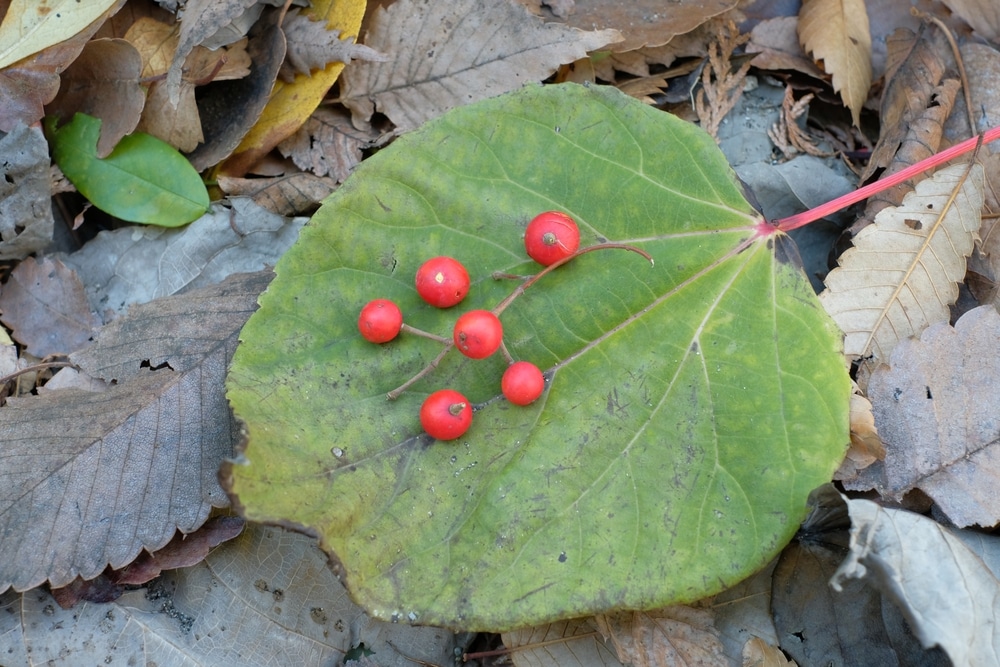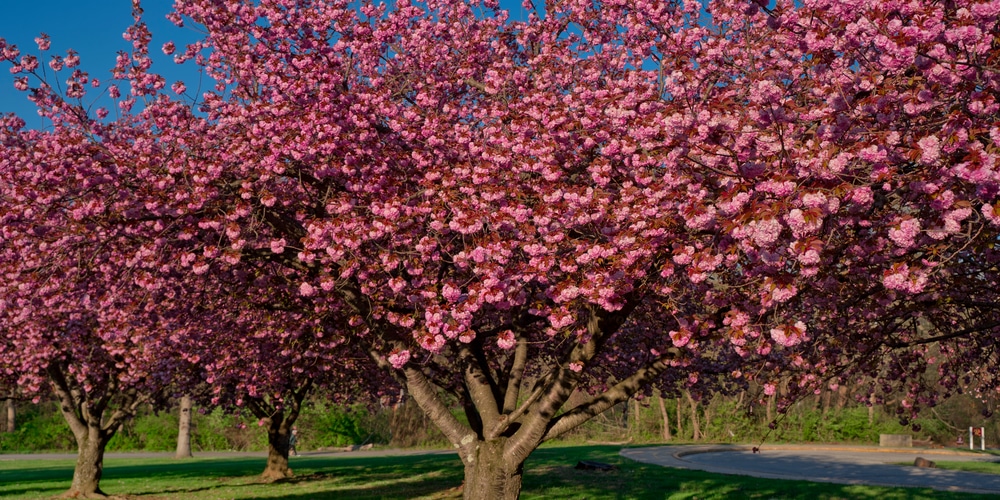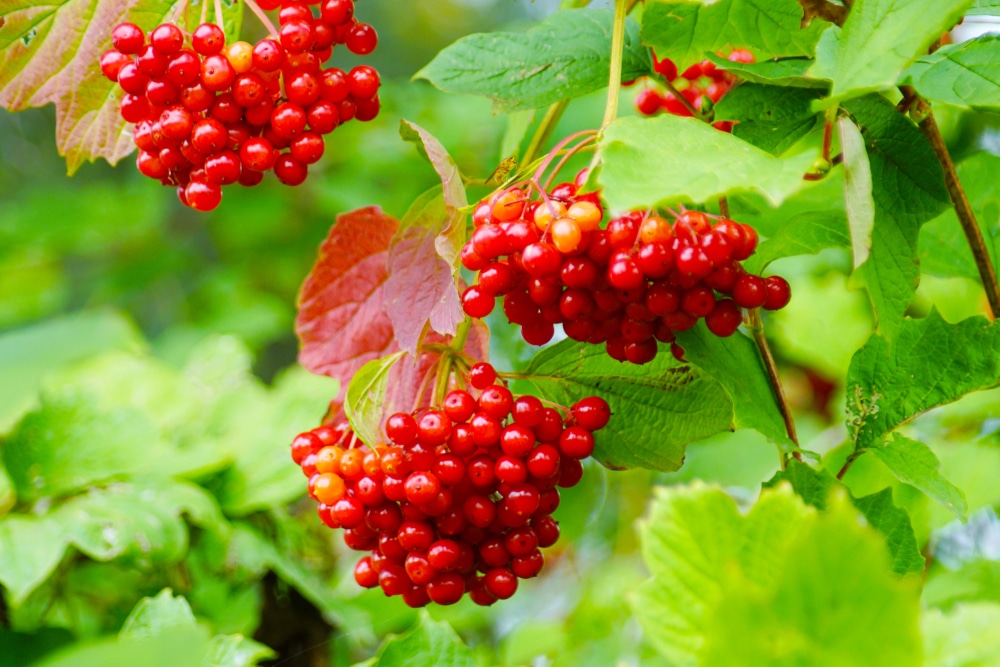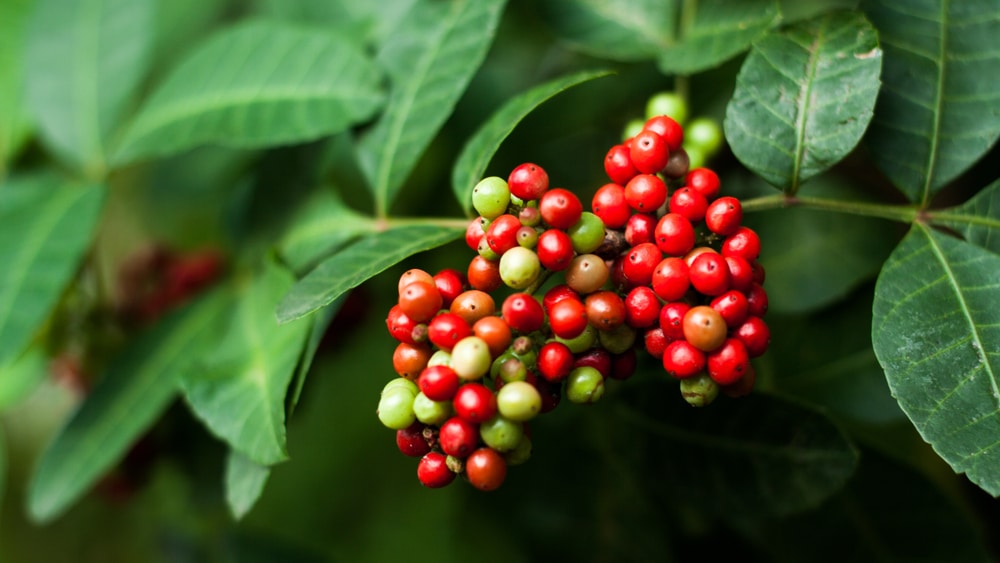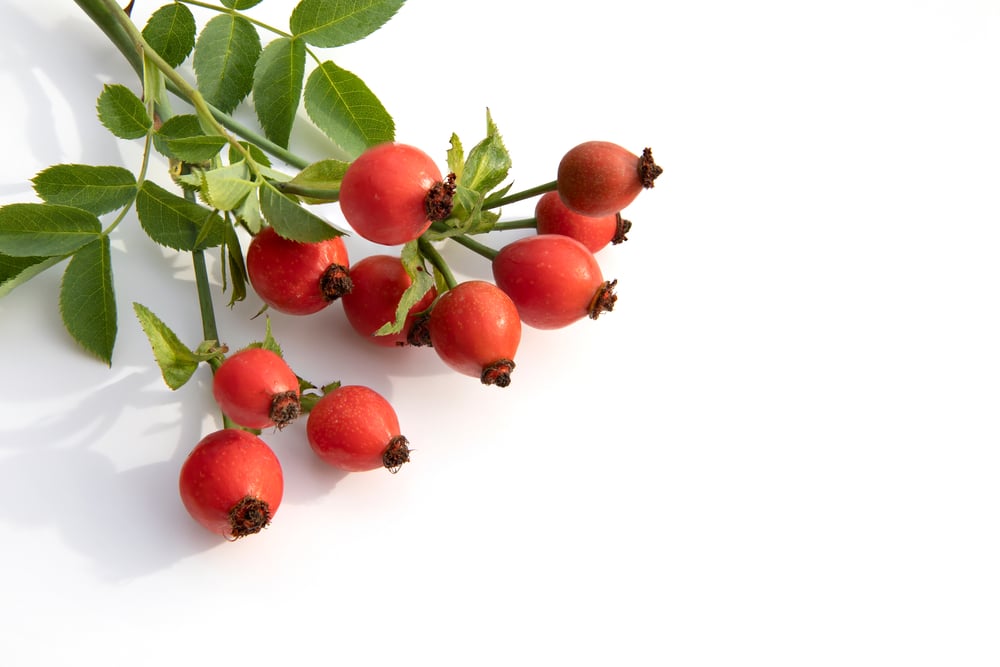A tree with red berries in winter creates a festive environment. And if snow dusts that same tree, it becomes the epitome of a classic winter wonderland scene.
If you want to create that kind of environment in your yard, then these are the trees you’ll want to consider planting on your property:
Hawthorn

The hawthorn tree also goes by the name thornapples. That reflects the appearance of the tree’s red-orange fruits. Those fruits first show up in the fall. Then, when the leaves drop off the tree, fruits take over.
Be sure to snap photos of the hawthorn fruit when they bloom, because you might be shocked when they all disappear by midwinter. That disappearance happens even faster when birds show up for the thornapple buffet.
Holly
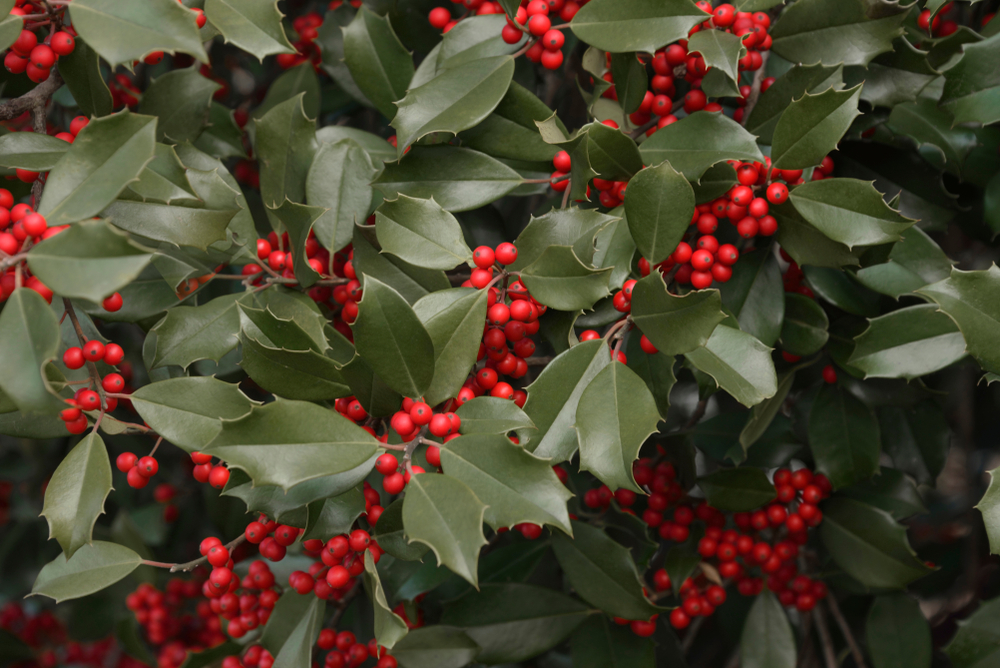
Can you imagine Christmas without decking the halls with boughs of holly? Versions of holly show up in wreaths, ornaments, and other festive decorations. From a gardening perspective, holly trees are dioecious. That means they will bear either male or female flowers. Therefore, it would be best to have a male tree nearby for bees to carry the pollen over to the female trees. That is how the berries show up.
For the record, holly berries are poisonous to humans and pets. They make lovely decorations but keep them away from the kids and the dogs.
Igiri
The igiri tree is often overlooked. That is until the winter. That is when the tree’s branches are overrun with clusters of red berries. The igiri tree follows the same pattern as the holly tree. You need a male and female tree side by side for the miracle of pollination to occur.
Crabapple
Although technically not a berry, the crabapple’s size and bright red color make it a terrific part of any winter scene. In the spring, the crabapple tree blossoms with fragrant flowers. In the ensuing months, the crabapples show up and linger through midwinter. These tiny apples are very popular with birds and rodents. You’ve been warned – pick them fast!
Mountain Ashes
The mountain ash species of tree grows best in cooler climates. In the winter, they burst forth with red fruit clusters. Those fruit clusters will hang around until the end of winter. The fruit shows up on four different species of ash:
- Whitebeam Mountain Ash
- European Mountain Ash
- American Mountain Ash
- Korean Mountain Ash
American Cranberry
Cranberries are an essential side dish for many a holiday dinner. Those berries come from the cranberry tree that can get as tall as 12 feet high. In the spring, the cranberry tree blossoms with white flowers. Then, in the summer, the cranberries show up. Those berries often last until the winter.
Pepper Tree
That is not a tree for spicy peppers. It is a tree native to South America that can grow as tall as 40 feet. It is commonly found in Florida, so much so that it has made it’s way onto the invasive species list. The red berries that show up in the winter are a favorite among the bird population. However, those same berries can cause skin irritation in humans.
Dog Rose
The dog rose, or rosa canina, is a shrub that can look like a tree when it is full grown. It blooms with pink flowers in the spring. Bees and butterflies are big fans of these flowers. It’s an excellent way to attract them to your garden. From the fall to the winter, the tree sprouts orange-red berries. Some folks use these berries to make syrup.
Final Thoughts
A tree with red berries in winter would make a wonderful addition to any landscape. However, planting any fruit-bearing tree might take a year of growth before you see any of the berries. So get those trees in the ground today!
